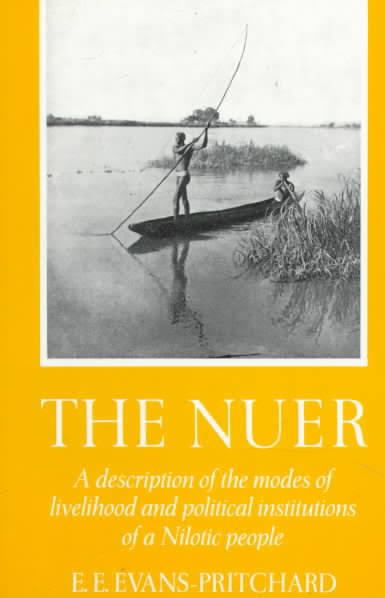Publication date 1940 Subject Social anthropology | Originally published 1940 Publisher Oxford University Press | |
 | ||
Followed by The Sanusi of Cyrenaica. Original title The Nuer: A Description of the Modes of Livelihood and Political Institutions of a Nilotic People Preceded by Witchcraft, oracles and magic among the Azande Similar Nuer religion, African Political Systems, Kinship and marriage, Witchcraft - oracles and magi, The Sanusi of Cyrenaica | ||
The nuer preview
The Nuer: A Description of the Modes of Livelihood and Political Institutions of a Nilotic People (first published 1940) was an anthropological account of the lineage and political systems of the Nuer people by the English anthropologist E. E. Evans-Pritchard.
Contents
The nuer people of ethiopia
The structure of the book
The first two chapters - 'Cattle' and 'Oecology' - provided an environmental setting for the Nuer, cattle pastoralists who carried on limited horticulture. Evans-Pritchard emphasised the extent to which cattle dominated both their economic activity and their social ideals:
They consider that horticulture is an unfortunate necessity involving hard and unpleasant labor and not an ideal occupation, and they tend to act on the conviction that the larger the herd, the smaller need be the garden.
The third chapter, 'Time and Space',
The Nuer was the first of three books which Evans-Pritchard would publish on the Nuer: Kinship and Marriage Among the Nuer appeared in 1951, and Nuer Religion in 1956.
In the book's introduction, Evans-Pritchard warmly thanked the Nuer for the welcome he felt they gave him:
my warmest thanks are further rendered to the many Nuer who made me their guest and befriended me. Rather than speak of individuals, I express my general respect for this brave and gentle people.
Renaldo Rosaldo has criticised Evans-Pritchard for making invisible, in the subsequent body of The Nuer, the colonial power relations which enabled his ethnography.
